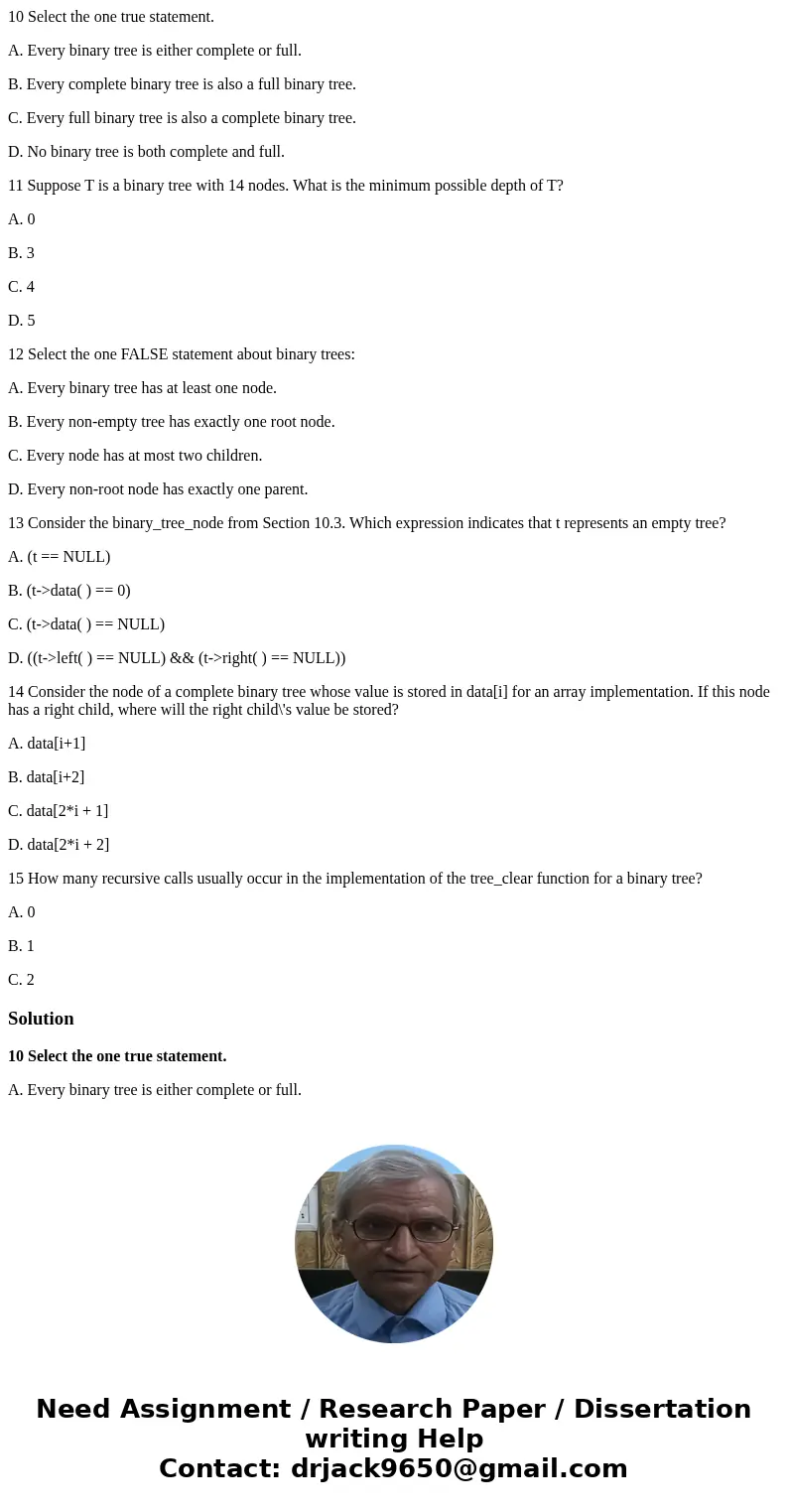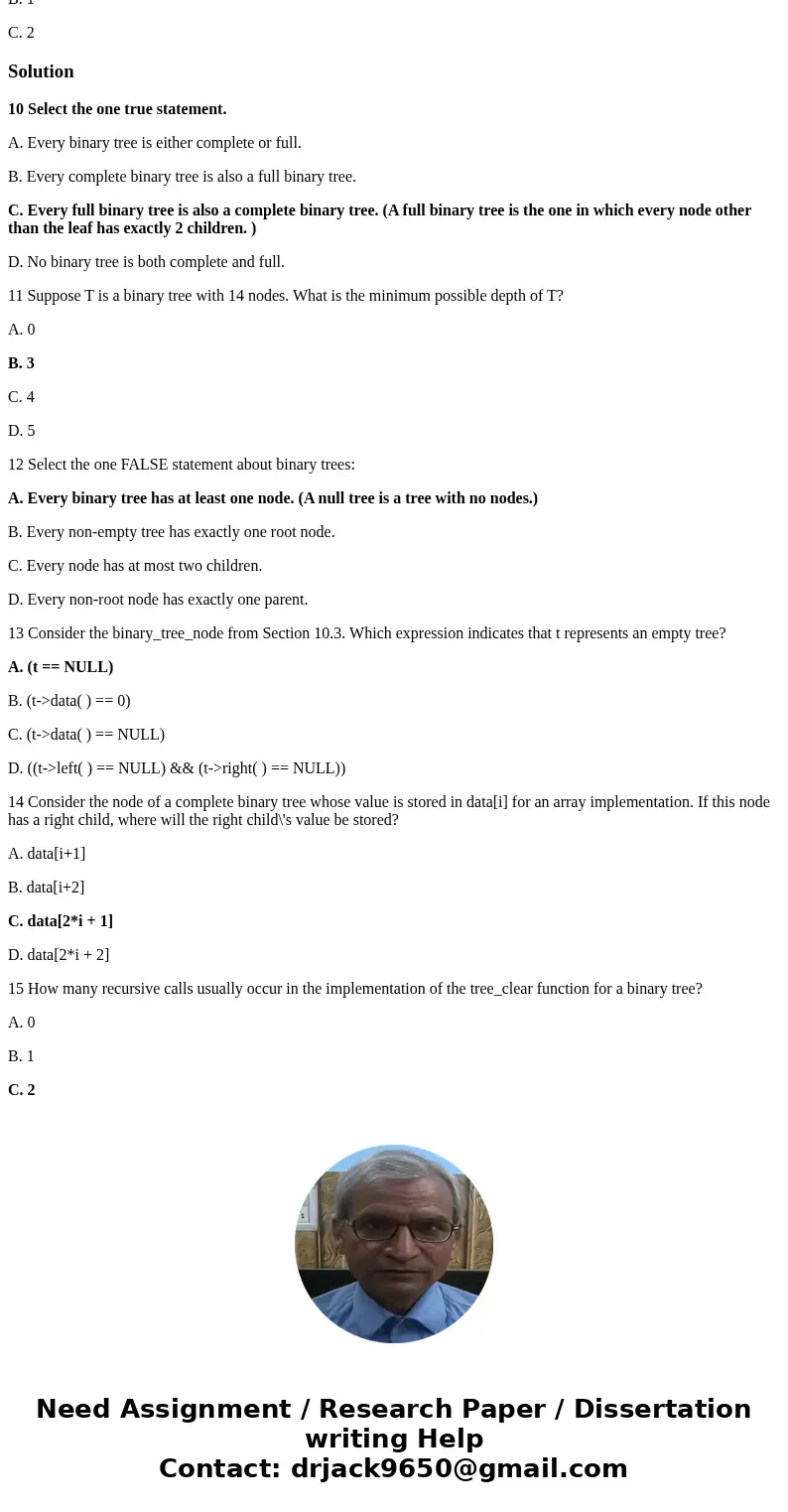10 Select the one true statement A Every binary tree is eith
10 Select the one true statement.
A. Every binary tree is either complete or full.
B. Every complete binary tree is also a full binary tree.
C. Every full binary tree is also a complete binary tree.
D. No binary tree is both complete and full.
11 Suppose T is a binary tree with 14 nodes. What is the minimum possible depth of T?
A. 0
B. 3
C. 4
D. 5
12 Select the one FALSE statement about binary trees:
A. Every binary tree has at least one node.
B. Every non-empty tree has exactly one root node.
C. Every node has at most two children.
D. Every non-root node has exactly one parent.
13 Consider the binary_tree_node from Section 10.3. Which expression indicates that t represents an empty tree?
A. (t == NULL)
B. (t->data( ) == 0)
C. (t->data( ) == NULL)
D. ((t->left( ) == NULL) && (t->right( ) == NULL))
14 Consider the node of a complete binary tree whose value is stored in data[i] for an array implementation. If this node has a right child, where will the right child\'s value be stored?
A. data[i+1]
B. data[i+2]
C. data[2*i + 1]
D. data[2*i + 2]
15 How many recursive calls usually occur in the implementation of the tree_clear function for a binary tree?
A. 0
B. 1
C. 2
Solution
10 Select the one true statement.
A. Every binary tree is either complete or full.
B. Every complete binary tree is also a full binary tree.
C. Every full binary tree is also a complete binary tree. (A full binary tree is the one in which every node other than the leaf has exactly 2 children. )
D. No binary tree is both complete and full.
11 Suppose T is a binary tree with 14 nodes. What is the minimum possible depth of T?
A. 0
B. 3
C. 4
D. 5
12 Select the one FALSE statement about binary trees:
A. Every binary tree has at least one node. (A null tree is a tree with no nodes.)
B. Every non-empty tree has exactly one root node.
C. Every node has at most two children.
D. Every non-root node has exactly one parent.
13 Consider the binary_tree_node from Section 10.3. Which expression indicates that t represents an empty tree?
A. (t == NULL)
B. (t->data( ) == 0)
C. (t->data( ) == NULL)
D. ((t->left( ) == NULL) && (t->right( ) == NULL))
14 Consider the node of a complete binary tree whose value is stored in data[i] for an array implementation. If this node has a right child, where will the right child\'s value be stored?
A. data[i+1]
B. data[i+2]
C. data[2*i + 1]
D. data[2*i + 2]
15 How many recursive calls usually occur in the implementation of the tree_clear function for a binary tree?
A. 0
B. 1
C. 2


 Homework Sourse
Homework Sourse